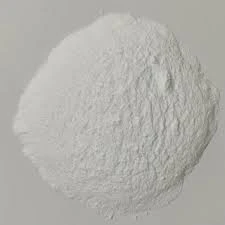Understanding Plastic Additives and Compounding
The modern world is increasingly reliant on plastics, which are versatile materials used across various industries, from packaging and automotive to electronics and construction. However, the raw polymers alone often do not meet the specific performance requirements needed for these applications. This is where plastic additives and compounding play a crucial role. By enhancing the properties of plastics, these elements contribute significantly to the functionality and longevity of plastic products.
What are Plastic Additives?
Plastic additives are chemical substances that are incorporated into the polymer matrix during production to achieve desired properties. These additives serve various functions, including improving flexibility, durability, thermal stability, and UV resistance, among others. Some of the most common types of plastic additives include
1. Stabilizers These additives prevent the degradation of polymers when exposed to heat, light, and oxygen. For example, UV stabilizers protect plastics from photodegradation, extending the lifespan of outdoor applications like garden furniture.
2. Plasticizers These substances are used to increase the plasticity and flexibility of plastics. Commonly found in polyvinyl chloride (PVC), plasticizers enable the production of softer, more elastic products such as soft toys and flexible tubing.
3. Flame Retardants As safety regulations become more stringent, flame retardants have become essential in plastic formulations. These additives reduce the flammability of plastics, making them safer for use in electronics, textiles, and construction materials.
4. Antioxidants Used to prevent oxidative degradation, antioxidants are vital in protecting polymers during processing and throughout their lifespan. They help maintain the physical and mechanical properties of plastics exposed to environmental factors.
5. Fillers Fillers, such as talc or calcium carbonate, are added to plastics to improve strength, reduce costs, and modify other properties. They can enhance tensile strength and impact resistance while lowering the material's overall weight.
The Compounding Process
plastic additives and compounding

Compounding is the process of mixing plastic resins with additives to create a specific formulation that meets desired criteria based on the intended application. This process can take place in various forms, such as
- Batch Mixing In this method, ingredients are combined in batches, allowing for precise control over the formulation. It is commonly used for producing small quantities of specialized plastic grades.
- Continuous Mixing This process involves continuously feeding raw materials into a mixer, allowing for large-scale production. It is efficient for manufacturing high volumes of standard plastic grades with consistent properties.
Once compounded, the material can be processed further through techniques such as extrusion, injection molding, or blow molding to create finished products.
Importance of Additives and Compounding
The significance of additives and compounding cannot be overstated. In a competitive market, manufacturers strive to enhance product performance to meet consumer demands. Additives allow companies to tailor properties like strength, durability, and aesthetic appeal, ensuring that their products not only meet safety regulations but also stand out in terms of quality.
Moreover, with sustainability in mind, many manufacturers are exploring bio-based additives and eco-friendly compounds. Innovations in biodegradable plastics and recycled materials demonstrate a growing commitment to sustainable practices within the industry.
Conclusion
As plastics continue to dominate various sectors, the role of plastic additives and the compounding process becomes increasingly vital. These elements enable manufacturers to create tailored products that meet diverse performance requirements while adhering to safety and environmental guidelines. As technology advances and consumer preferences evolve, the landscape of plastic additives and compounding will undoubtedly continue to adapt, making it one of the most dynamic areas in materials science today. Understanding these components is essential for anyone involved in the production, design, or consumption of plastic products, as they hold the key to enhancing functionality and ensuring the longevity of materials in our ever-changing world.

